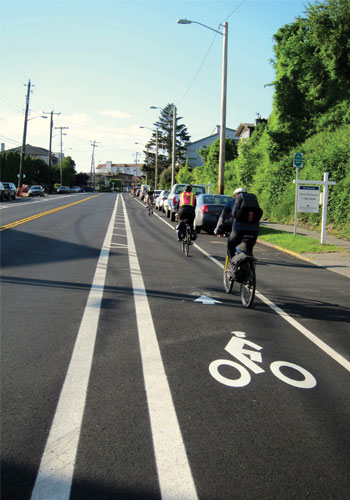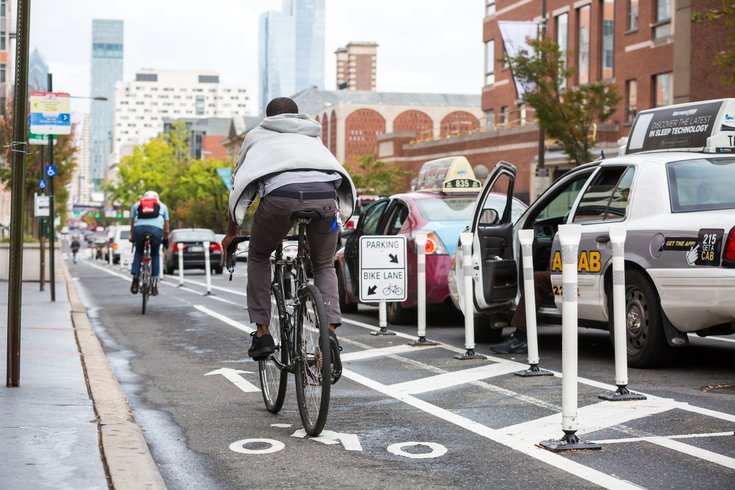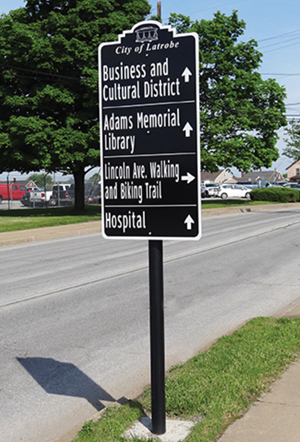Bicycle
This room provides a description of bicycle facilities and treatments. We're looking for your input on which improvements you'd like to see and where you'd like to see them.
To view existing bicycle facilities in the study area see the exhibit to the right. For descriptions and examples of bicycle facilities and treatments see the information provided below the survey.
Bicycle Facility Types & Descriptions
Shared Roadways using Lane Pavement Markings and Signs:
Sharrows and signs can be used to indicate where bicyclists and motorists will share the roadway. Sharrows are suitable on roadways with relatively low travel speeds (<25 mph) and may also be used to transition between discontinuous bicycle facilities along roadways with higher speeds and traffic volumes.
On-Street Bike Lanes:
On-street bike lanes are striped lanes on the roadway dedicated for the exclusive use of cyclists. On-street bike lanes can improve safety and security of cyclists and can provide direct connections between origins and destinations.

Buffered Bike Lanes:
Buffered bike lanes are enhanced versions of conventional on-street bike lanes that include an additional striped buffer. They are typically located along streets that require a higher level of separation, such as those with high-speed or heavy vehicle traffic, to improve the comfort of bicycling.
Separated Bike Lanes:
Separated bike lanes are bike lanes that are physically separated from motor vehicle traffic by a vertical element such as a planter, flexible post, parked car, or a mountable curb.

Enhanced Bicycle Crossings:
Enhanced bicycle crossings enable cyclists to safely and efficiently cross streets and other transportation facilities.Enhanced bicycle crossings include bike boxes and pavement markings through intersections.

Wayfinding Signs:
Wayfinding signs are physical signs or travel lane markings located along roadways or at intersections that direct cyclists. Wayfinding signs help inexperienced and/or less confident cyclists overcome perceived barriers by identifying lower speed and lower traffic volume routes.
Bicycle Parking:
Bicycle parking is a vital component of a city’s bicycle system and can be provided in a variety of sizes, shapes, and unique pieces of infrastructure that resemble the city’s character.